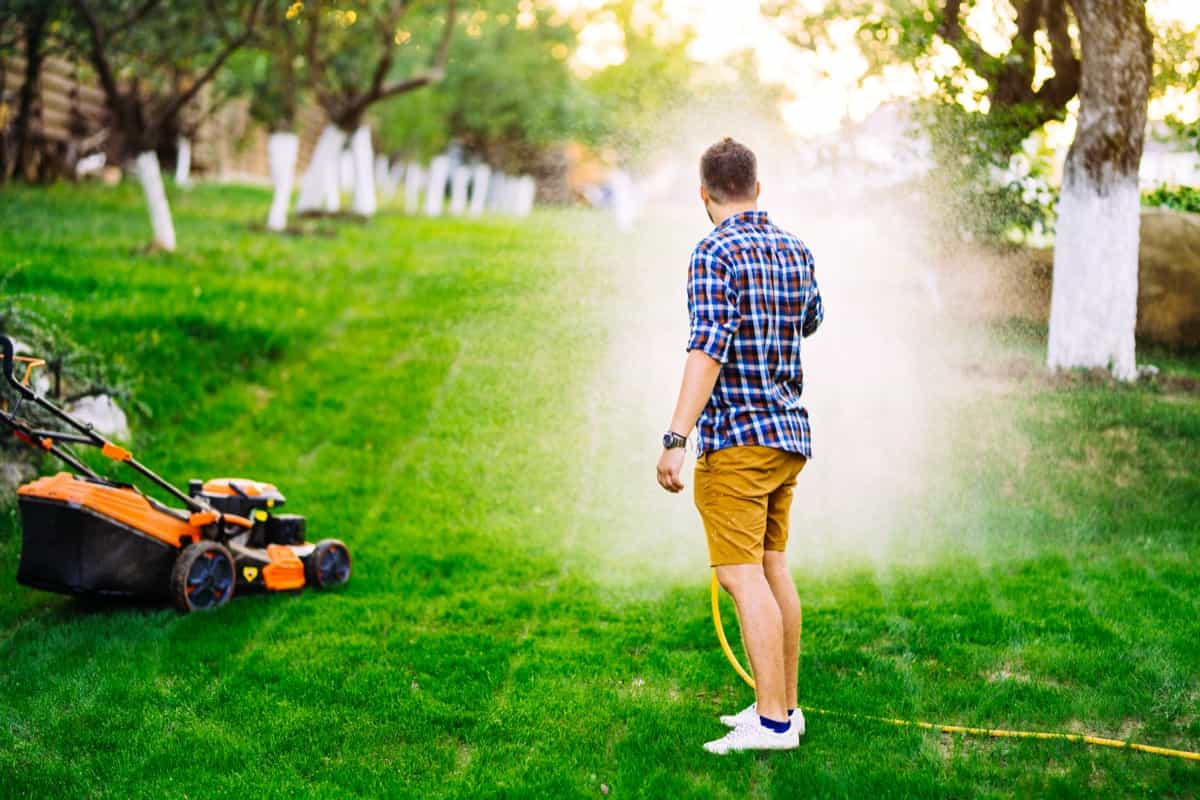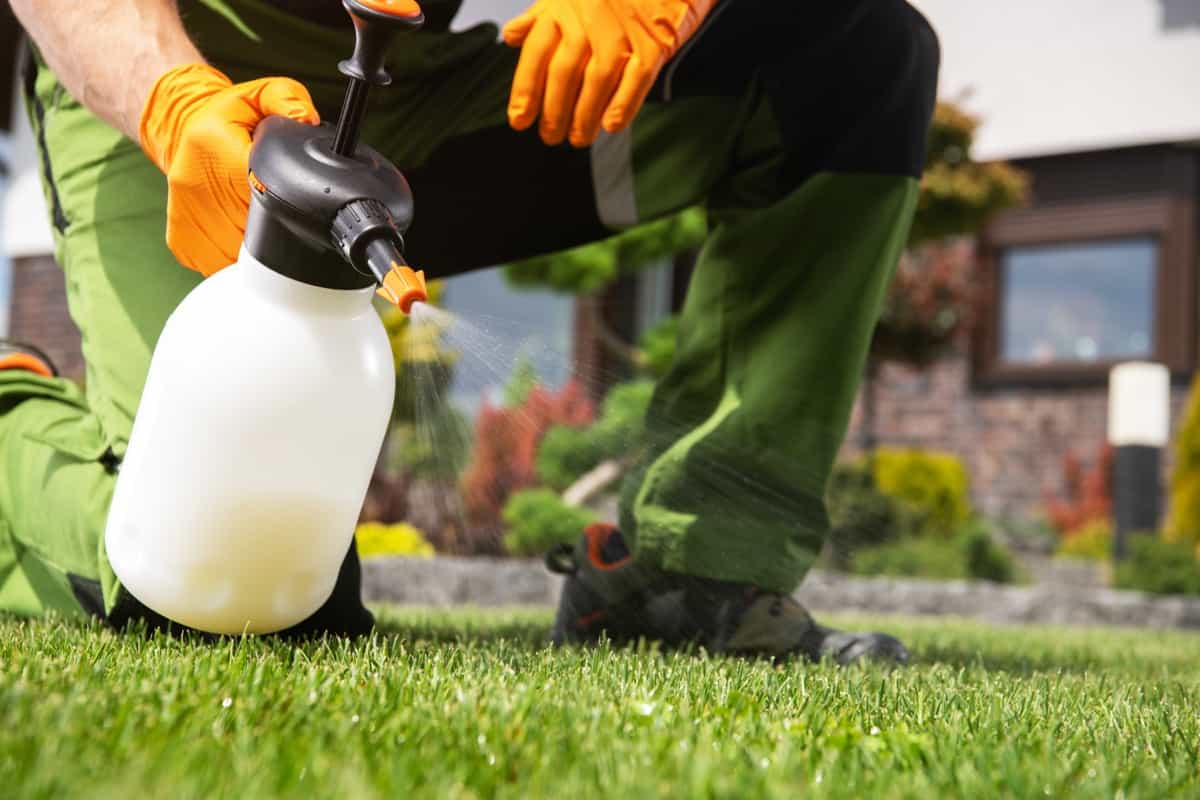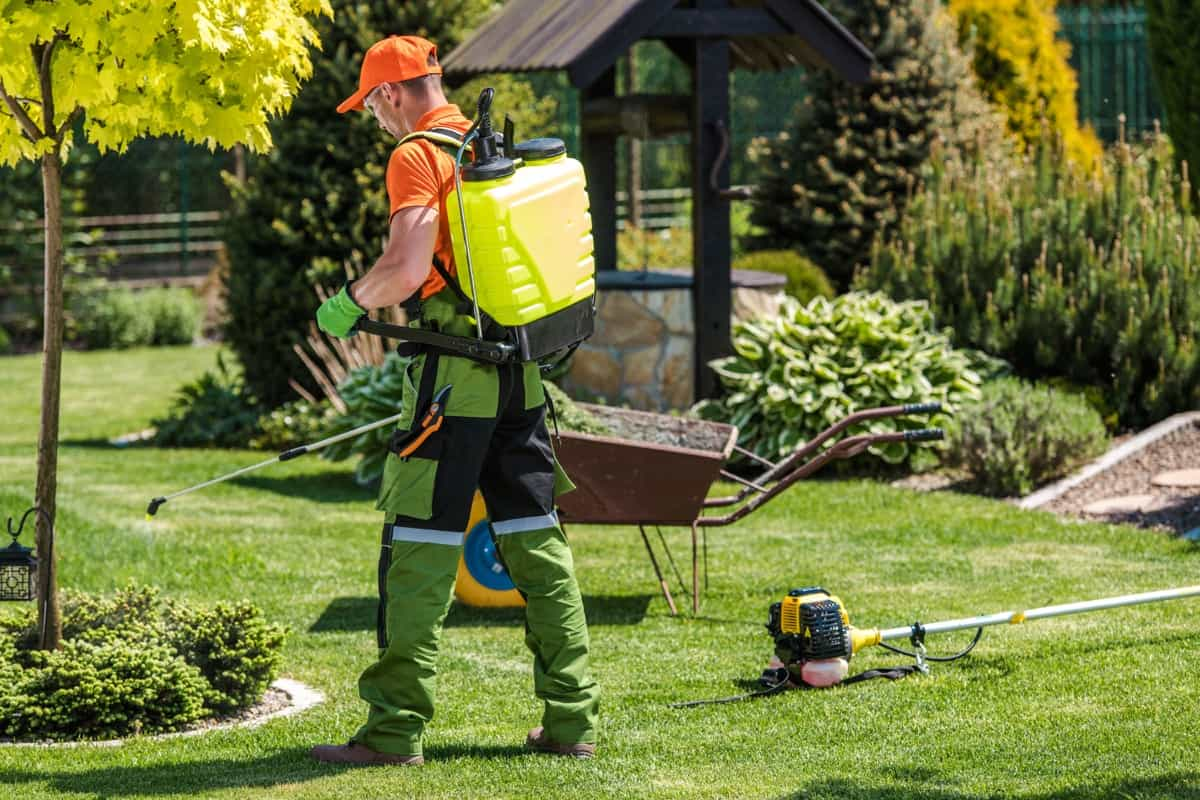Billbugs are a common pest in lawns, causing significant damage to grass by feeding on its stems and roots. Effective control strategies are essential to maintain a healthy and vibrant lawn. This guide will explore various methods to combat billbugs, including control methods, identifying damage, and choosing billbug-resistant grass varieties. We’ll delve into healthy lawn tips, billbug pheromone traps, and the importance of lawn aeration for billbug management.

The role of beneficial insects, entomopathogenic nematodes, and appropriate billbug insecticide use will be discussed alongside organic treatments like neem oil and diatomaceous earth. Lawn irrigation practices, repairing lawn damage, and insights into the billbug life cycle will provide a comprehensive understanding of how to achieve billbug lawn recovery. Additionally, professional lawn care services can offer assistance in the early detection and cultural control of billbugs, including lawn thatch management and mowing practices to reduce their habitat.
How to Get Rid of Billbugs In Lawns
Understanding Billbugs
Identifying Billbug Damage in Lawns
Billbug lawn damage is characterized by yellowing and wilting grass patches that can eventually turn brown and die, often mistaken for drought stress. The damage is primarily caused by billbug larvae feeding on grassroots, with adults feeding on the stems. Identifying billbug damage involves looking for hollowed-out grass stems and small, white larvae within the soil, providing early detection of billbugs and a crucial step in effective lawn management.
The Life Cycle of Billbugs
Understanding the billbug life cycle is key to implementing timely and effective control measures. Billbugs undergo a complete metamorphosis from egg to larva, pupa, and adult. The females lay eggs in grass stems, and the emerging larvae feed on the plant tissue, causing significant damage. Insights into their life cycle allow for targeted interventions to prevent lawn damage, particularly in disrupting the larval stage.
Preventive Measures
Choosing Billbug-Resistant Grass Varieties
Selecting billbug-resistant grass varieties is a proactive approach to minimize potential damage. Certain grass types, such as endophyte-enhanced varieties, are less appealing to billbugs and can significantly reduce the incidence of infestation. These grasses provide a natural form of billbug control, promoting a healthier lawn with reduced pesticide use.
Promoting a Healthy Lawn to Deter Billbugs
Maintaining a healthy lawn is one of the most effective strategies to deter billbugs. Healthy lawn tips include proper fertilization, mowing at the correct height, and adequate watering, strengthening the grass and making it less susceptible to billbug damage. A robust lawn can better withstand and recover from billbug infestations, reducing the need for chemical interventions.
Early Detection and Monitoring
Signs of Billbug Presence
Early detection of billbugs is crucial for effective control. Signs of their presence include small, round exit holes in grass stems, sawdust-like frass, and irregular brown patches in the lawn. Vigilant monitoring of these signs can prompt timely actions to mitigate damage and control the billbug population.
In case you missed it: How to Get Rid of Weevils in Lawn Naturally: Control and Treatment

Using Pheromone Traps
Billbug pheromone traps are useful for early detection and monitoring of billbug populations. These traps attract adult billbugs using specific pheromones, helping to gauge infestation levels and inform the timing of control measures. Pheromone traps are integral to an integrated pest management strategy, reducing reliance on chemical controls.
Cultural Control Strategies
Proper Mowing Practices to Reduce Billbug Habitat
Adopting proper mowing practices is essential in reducing billbug habitat and deterring infestation. Mowing the lawn at the recommended height for the grass species helps maintain lawn health and reduces the areas where billbugs can lay eggs and thrive. Regular mowing also helps in the early detection of billbug damage, allowing for prompt intervention.
Aeration and Thatch Management for Lawn Health
Lawn aeration and thatch management are critical components of cultural control strategies for billbugs. Aeration improves soil structure and root health, making the lawn less inviting to billbugs. Thatch management, involving the removal of excess organic matter, reduces the protective habitat for billbug larvae, further deterring their presence.
Natural Predators and Biological Controls
Encouraging Beneficial Insects
Encouraging beneficial insects in the lawn is a natural way to control billbugs. Predatory species, such as ground beetles and parasitic wasps, can significantly reduce billbug populations by preying on their larvae. Creating a habitat that supports these beneficial insects can enhance biological control and reduce the need for chemical pesticides.
Applying Entomopathogenic Nematodes
Entomopathogenic nematodes are microscopic worms that infect and kill billbug larvae, serving as an effective biological control method. These nematodes are applied to the soil, seeking out and destroying billbug larvae, offering a safe and natural way to reduce billbug damage without harming non-target organisms or the environment. Incorporating entomopathogenic nematodes into lawn care practices can significantly aid in managing billbug populations and contribute to the overall health of the lawn.
Chemical Control Options
When to Use Insecticides for Billbugs
Insecticides should be considered for billbugs when infestations are severe, and other management strategies have proven ineffective. The decision to use chemical controls must be based on thorough monitoring and the extent of damage. The application is timed to target the most vulnerable stages of the billbug life cycle, typically during early larval development. It’s crucial to select products specifically labeled for billbug control and to follow label instructions carefully to minimize environmental impact and avoid harm to beneficial organisms.
Selective Insecticide Application Tips
Selective insecticide application involves targeting specific areas where billbug activity is confirmed rather than treating the entire lawn. This approach minimizes pesticide use and exposure, focusing on affected zones to maximize effectiveness. Spot treatments and precise timing can significantly reduce billbug populations while preserving the lawn’s ecological balance.
In case you missed it: Best Fungicide for Lawns: Discover 100% Effective Treatment with These Top 10 Fungicides

Organic Solutions and Treatments
Using Neem Oil Against Billbugs
Neem oil, sourced from the neem tree, offers an eco-friendly solution for repelling billbugs and reducing harm. This natural insecticide interrupts billbugs’ life cycles, inhibiting their growth and ability to reproduce. Its application, following label instructions, ensures safety around children and pets, making it the top pick for environmentally aware lawn maintenance.
Diatomaceous Earth for Billbug Control
Diatomaceous earth is a non-toxic, organic powder from fossilized algae that can effectively control billbugs when applied to the lawn. It works by causing physical abrasion to the billbugs’ exoskeletons, leading to dehydration and death. Diatomaceous earth is safe for beneficial insects and the environment, making it an excellent organic billbug management strategy component.
Water Management
Irrigation Practices to Discourage Billbugs
Proper lawn irrigation practices are crucial in discouraging billbug infestations. Overwatering can create favorable conditions for billbugs, while underwatering can stress the grass, making it more susceptible to damage. Implementing efficient watering techniques, such as deep, infrequent watering, can help maintain a healthy balance of moisture in the soil, reducing the lawn’s attractiveness to billbugs.
Balancing Moisture for Lawn Health
Balancing moisture levels in the lawn is key to maintaining its health and resilience against billbugs. Adequate soil moisture supports strong root development, essential for grass to withstand and recover from billbug damage. Monitoring soil moisture and adjusting irrigation practices can significantly enhance the lawn’s ability to resist billbug infestations.
Repairing Billbug Damage
Lawn Recovery Techniques
Once billbug damage has been addressed, implementing lawn recovery techniques is essential to restore its health and appearance. Aeration, overseeding, and proper fertilization can rejuvenate damaged areas, promoting the growth of new, healthy grass. These recovery efforts and ongoing maintenance and monitoring can effectively restore a lawn’s vitality after a billbug infestation.
Reseeding and Overseeding Tips
Reseeding and overseeding damaged lawns are effective strategies to repair billbug damage and prevent future infestations. Selecting the right grass seed, particularly billbug-resistant varieties, and applying it optimally ensures successful germination and establishment. Proper soil preparation, combined with ongoing care, can significantly improve the lawn’s appearance and health, making it less vulnerable to billbug damage in the future.
In case you missed it: Management of Fungal Diseases in Lawns: How to Control and Prevent with Natural and Organic Treatment

Conclusion
Implementing a combination of early detection, cultural controls, natural predators, and appropriate chemical or organic treatments can effectively manage billbug infestations, ensuring the health and vitality of your lawn. Adopting these strategies, from selecting billbug-resistant grass to employing beneficial insects and entomopathogenic nematodes, promotes a sustainable approach to lawn care and billbug management.
- Beneficial Insects in Pest Management
- Natural Solutions for Pest Control in Flower Gardens
- Types of Fungicides Used in Agriculture
- Common Issues in the Fruit Development Stage of Pomegranate Farming
- Fruit Development Issues in Papaya: Easy Solutions and Treatment
- Soil-Borne Diseases and How to Protect Your Plants
- Practices to Prevent Disease Spread in the Garden
- From Wilted to Thriving: How to Treat Root Rot Naturally in Houseplants
- Natural Remedies to Cure Brown Spots on Fig Tree Leaves